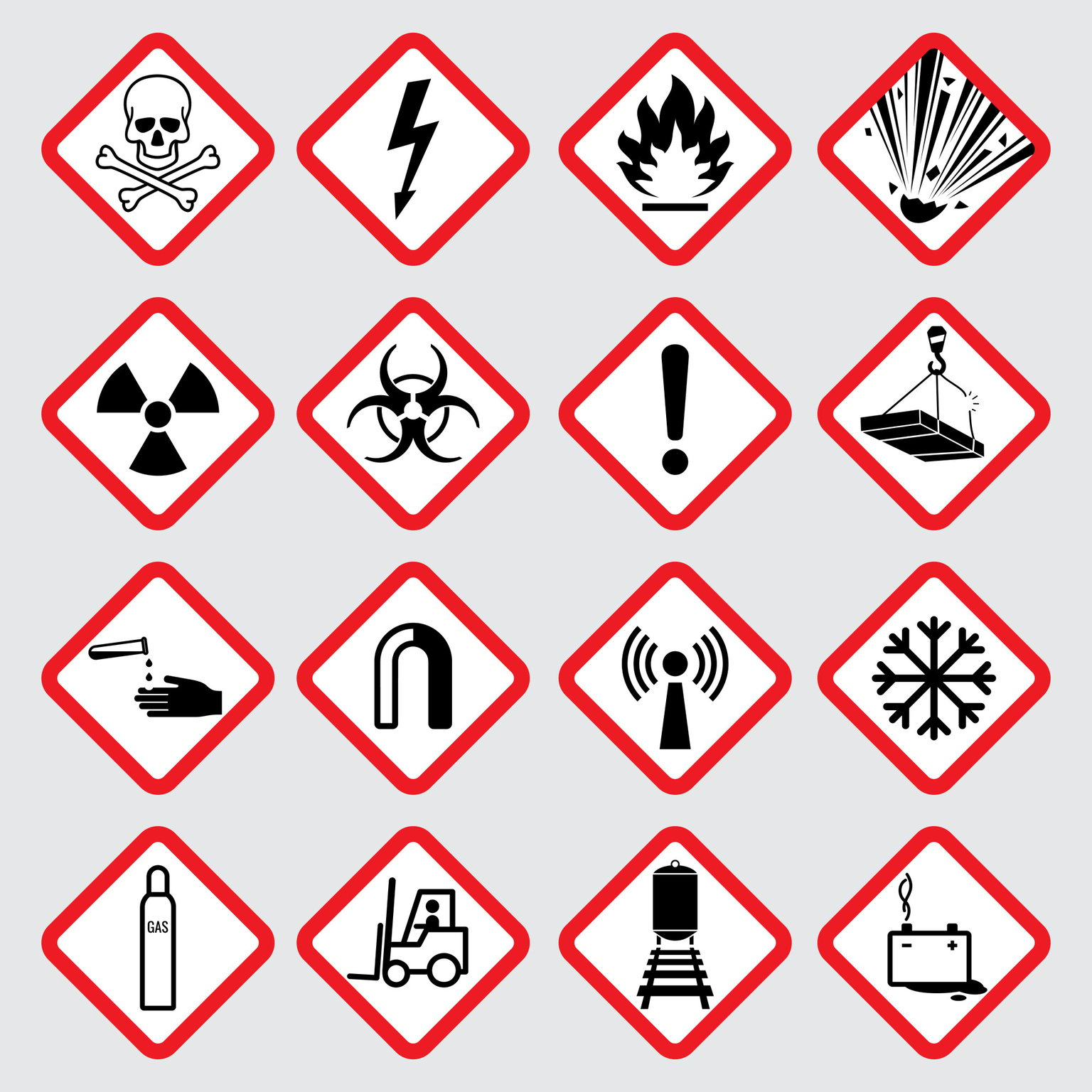Did you know that each year, there are at least 150 serious chemical incidents that occur in the U.S. alone? What’s concerning is that these incidents often happen at or near the facility that either produced or used the harmful chemical. Things like this are why more facility managers should know who is responsible for providing SDS.
Consider the fact that these are only ‘serious’ incidents. This doesn’t even account for general exposure to harmful chemicals. It also doesn’t account for nonfatal injuries due to exposure to these chemicals.
SDS tools aren’t only meant to provide a paper trail for safety. They are meant to actively ensure employee safety. They help businesses with OSHA regulation compliance.
These sheets help with raising more awareness where chemicals are being used as well. Chemical injuries are often preventable and considering that around 32 million workers in the U.S. alone are regularly exposed to harmful chemicals day-to-day, SDS is a needed tool.
Let’s outline who exactly is responsible for providing these sheets, why they’re important, and how they’re used in real-world workplaces.
What Are Safety Data Sheets?
In simple terms, if you are working with a variety of different substances, products, and chemicals, there will be a document provided that outlines all information relevant to those substances. That document is what is considered the safety data sheet.
It’s also known as either a product data sheet or material data sheet. They document the properties of the chemicals you might encounter within your workplace. All information relating to occupational safety and health will be provided on those sheets.
The hazards mentioned will include any hazards related to general health. It will also include physical and environmental health hazards.
Additionally, safety regulations help ensure that these sheets contain proactive measures. This includes safety precautions for safety the chemicals you will be using as well.
These precautions will include information about all aspects of chemical use. This will involve information on storage , handling and transport, and how to do all of this safely. Essentially, it’s a form that keeps workers informed, safe, and generally protected.
The Primary Reasons They Exist
There are a few primary reasons why safety data sheets are used. Identification and hazard communication are two of them. The purpose of identification is to identify the supplier of the product and what it actually is.
Hazard identification involves listing and communicating all hazards associated with the product. Additionally, prevention and the duty of response are two other reasons these sheets are used. Preventative tactics involve the necessary steps needed for workers to help prevent exposure.
Knowing how to reduce harmful incidents can limit emergencies if not prevent them fully. The response portion involved with these sheets includes everything related to responding to adverse events. For example, this would involve the need for first-aid or the harm of accidental substance release.
Overall, these forms were designed to provide support in the case of an emergency and before an emergency actually occurs. These documents are often required to be kept up with for a minimum of 30 years according to OSHA safety standards.
If the properties of a substance change, this would be something that the manufacturer or supplier would provide to businesses that use their products. In general, these records need to be maintained for a certain amount of time and updated as needed.
Who Is Responsible for Providing SDS
When considering who is responsible for providing SDS, the new Hazard Communication Standard (HCS) has a certain requirement. That requirement says that the manufacturer, distributor, or importer of a certain chemical will be responsible for providing the SDS.
This applies to all users of the product and an SDS has to be provided for all hazardous chemicals. When a manufacturer fails to provide an SDS with the shipment of a harmful product, they could expect large fees because this is a serious OSHA violation.
These violations could cost distributors up to a $12,000 fee per incident. This is also why it’s essential for distributors to keep up with updated products. They’re responsible for sending users of their chemicals updated SDS’s if needed and will receive a fine if updates aren’t provided.
Realize that this fee for the violation doesn’t include any damages that may have occurred to workers which is another reason why this is a vital step in supplying chemical products. Also, this is a reason for businesses to use online SDS management tools.
SDS Management and Why It’s Needed
These tools allow for better compliance management and create safer workplaces. What’s great is that a lot of these platforms also offer resources for employees. This allows workers access to relevant information regarding the chemicals they will be handling.
This type of software makes employee training simpler. It also gives businesses a place to store significant amounts of data and copies of SDS’s they’ve received. Keep in mind that these sheets provide information regarding toxicity and procedures that should be followed in the case of a leak or spill.
Online safety data sheet management platforms give you an all-in-one solution for managing this information. This information could also be taken to form more detailed training and to simplify onboarding for different positions. You will receive methods for exposure control as well as guidelines needed for proper storage.
How Are SDS Used in the Workplace?
SDS’s are used in the workplace in a variety of ways regarding safety and training. They outline all hazards associated with different products. This is something that drives product safety from transporting to implementing them into different use cases.
Overall, they are a risk management tool. A safety data sheet’s purpose is to minimize if not completely eliminate risk. You will find things such as:
- Ingredient compositions
- First-aid methods
- Methods for fire safety and firefighting
- Exposure measures
Additionally, businesses will notice extra information. This information will include measures for accidental release cases.
It will also provide measures for personal protection. The most important sections are all ‘warning’ information which is often found in section two of these sheets.
Why Are They Essential to Employee Safety
Tens of thousands of chemicals are used across the U.S. in different types of facilities. While this may be necessary for certain types of work, there is never a good excuse for chemicals to not be regulated within a workplace yet, so many aren’t.
Due to issues like this, workers experience 190,000 illnesses every year. What’s even worse is that because of not regulating chemicals in workplaces, 50,000 deaths are occurring from this reason alone. An SDS is meant to prevent or at least reduce the cases of injuries and illnesses related to chemicals in the workplace.
There are often safety protocols put into place in most workplaces. Some of these protocols might include wearing safety goggles or masks as needed. The problem is, that you can’t have general safety protocols.
If you have regulations that are more ‘universal’ and workers that work around chemicals, health risks are still a concern. Not all chemicals just require the use of gloves and a mask.
For example, when working around chemicals, a lot of the time a facepiece respirator needs to be used. Or, there might be a certain material that is better for certain types of work. If workplaces aren’t obtaining SDS’s, their workers aren’t protected.
Are They Relevant Beyond the Workplace?
Yes, safety data sheets are relevant far beyond the workplace. Consider that certain types of work require you to properly decontaminate yourself. Some require that you wear certain types of shoes or that you wear boot covers.
If you have a new hire who is unaware of these rules and how they relate to chemical safety, this could pose a large threat offsite. Chemical poisoning for example can pass from one person to another person. This usually happens from contact with a contaminated piece of clothing or from skin contact due to an affected person.
An SDS would provide a business with all relevant protocols associated with the chemicals being used. This would give them an idea of how to structure their internal regulations.
This could include proper decontamination and cleaning methods. It could also include what to wear and what not to wear. If a worker dons the appropriate protective gear but still decides to wear their watch, omit their boot covers, and not tuck their laces, the chances of them tracking the chemicals in case of a spill to other areas is high.
An SDS doesn’t only protect your facility, your operations, or your employees. It protects your clients and the families of workers. The point of this information document is to reduce the spread of harmful chemicals and to make employees aware of all risks.
Managing Your Safety Data Sheets All in One Place
Safety data sheet management is essential for keeping your workers safe and your operations intact. It may seem complex but with the right technology, it can be made easy. These sheets provide you with necessary guidelines, procedures, and information associated with substances you might use.
Now that you are aware of who is responsible for providing SDS, you need a place to manage it. Use KHA Online SDS to get simple multi-device support for all of the chemicals you use in your operations.
Schedule a demo to get started.


